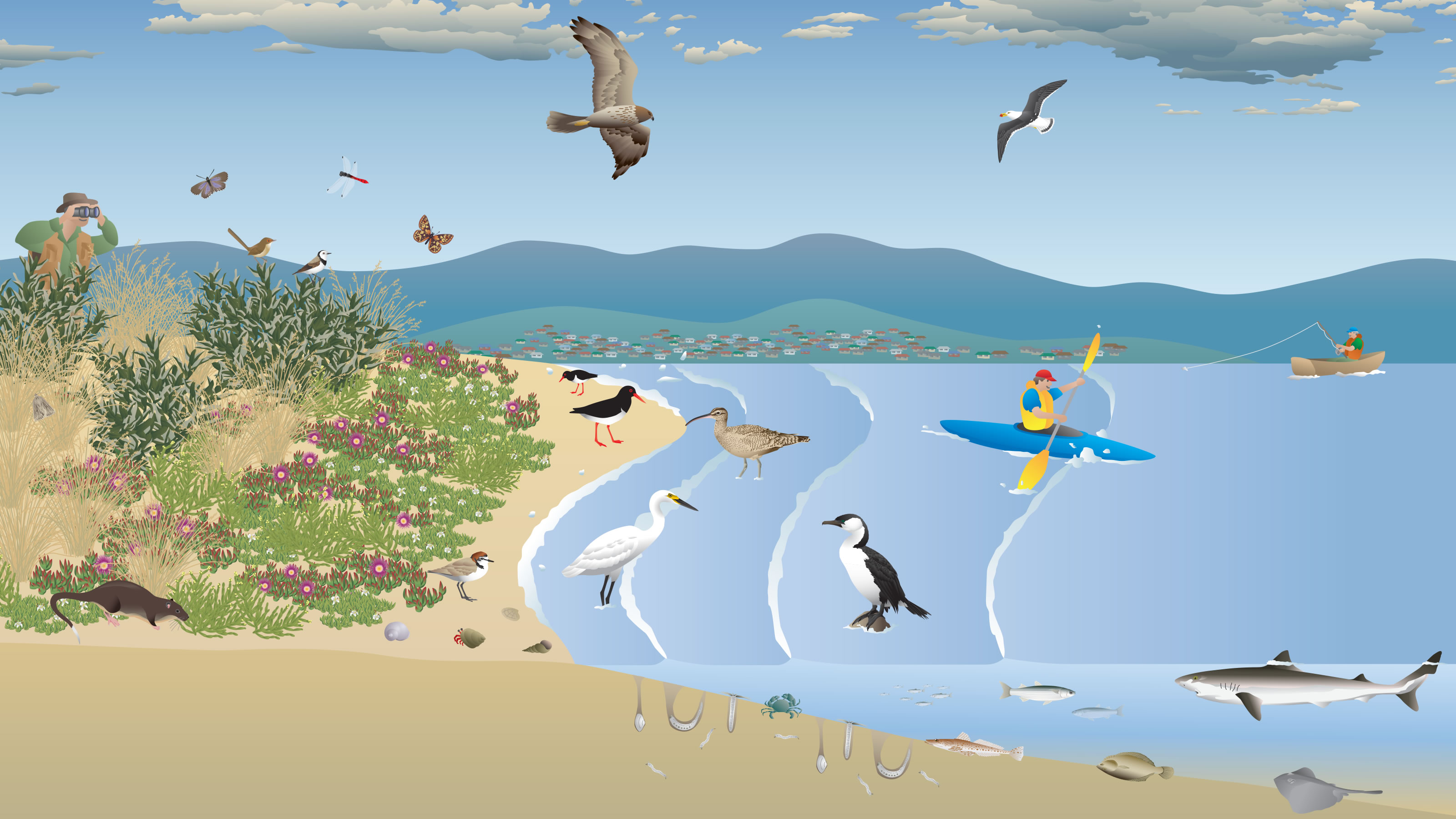In Tasmania saltmarshes mainly occur in small patches and are generally found within bays and at the mouths of creeks and streams. Their extent depends upon the shape of the landscape, being largest in flat low-lying areas. Within the Derwent Estuary the largest area of saltmarshes and tidal flats occurs in Ralphs Bay near Lauderdale. They are highly productive habitats provide food and shelter for a diverse suite of marine and terrestrial species, and also support the healthy functioning of estuaries.

- Shrubby Glasswort
- Chaffy Saw Sedge
- Beaded and thick-headed glasswort
- Round-leafed Pigface
- Wilsonia
- Looper Moth
- Chequered Blue-butterfly
- Dragonfly
- Burrowing invertebrates
- Fragile Air breather
- Microscopic algae and bacteria
- Sand Flathead
- Skate
- Flounder
- Shark
- Baitfish
- Red-capped Plover
- White-fronted Chat
- Striated Field wren
- Swamp Harrier
- Egret
- Whimbrel
- Black faced Cormorant
- Pied Oystercatcher
- Pacific Gull
- Water Rat
Click or tap on a species to learn more.
There are 11.4 km² of sandy tidal flats/beaches remaining in the Derwent Estuary (primarily in Ralphs Bay) and about 1 km² of mudflats (in the upper estuary), according to the Habitat Atlas. The land side margins of tidal flats are often associated with saltmarshes, containing unique succulents and other salt-tolerant plants
Did you know?
- More than 10 species of wading birds feed on the sandy tidal flats of Ralphs Bay. Some of these birds migrate over 15,000 km each year, from their breeding sites in the northern hemisphere as far as Alaska and Siberia.
Community types
Plants and animal species of saltmarsh and tidal flats occur in a range of different community types, largely distinguished by the vegetation types.
Key threats
Extensive loss of saltmarsh due to land reclamation and changes in land use mean that many remaining areas are often fragmented. Despite the significance of saltmarsh it is one of the most heavily impacted coastal habitats and are listed as an Endangered Ecological Community in some Australian states. Of critical importance to the future of these habitats are changes in relative sea level and in tidal range. Climate related threats require re-zoning of land neighbouring saltmarshes to enable the landward transgression of these saline wetlands with sea level rise.
Saltmarshes are highly fragile and prone to disturbance, especially from:
- motorbikes and cars
- grazing from rabbits and livestock
- illegal clearing
- bushfire
- weed invasion
For more information on threats to saltmarsh and other habitats in the Derwent Estuary see our publications.
Educational resources
To further explore this habitat and others, check out our educational resources.
